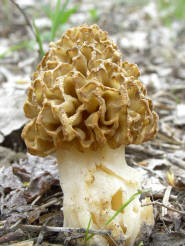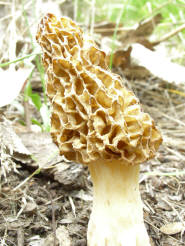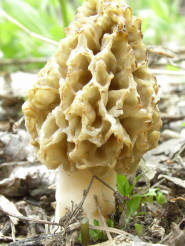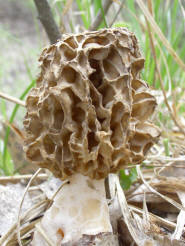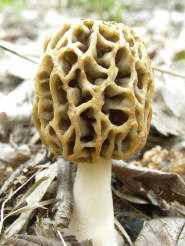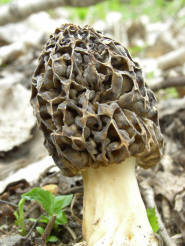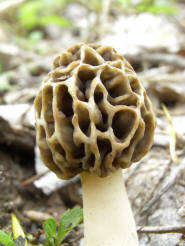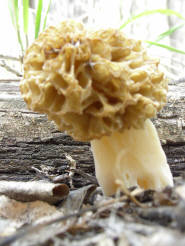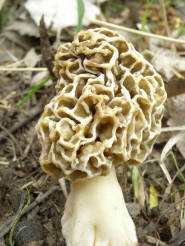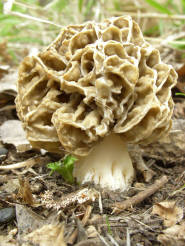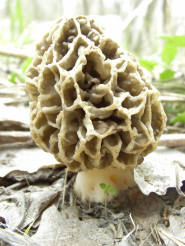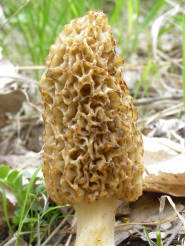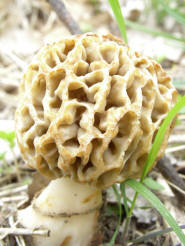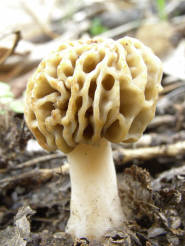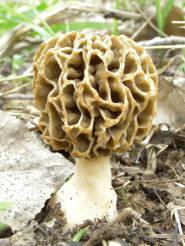 |
|
Research Photo Pages
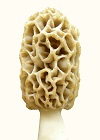
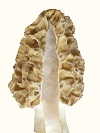
|
All of the morels shown below are from the same patch, which means they are genotypically the same and the differences are phenotypic. Every ascospore produced by morel mushrooms is phenotypically different (except that they are produced in pairs of two identical spores). Dozens of common enzymes in morels have been shown to have variable alleles. If there are 50 possible variations, there would be a quadrillion different possible morels. That's ten to the fifteenth power. There has probably been less than a hundred billion morels globally in this ice age cycle. These numbers add up to 10,000 times more options than total morels. Therefore, there would statistically never be any two morel phenotypes the same. A phenotype is a group of morels that grow out from a mycelial mass that originated from one ascospore. Such mycelial masses have diameters of 1-4 meters as indicated by phenotype clusters. 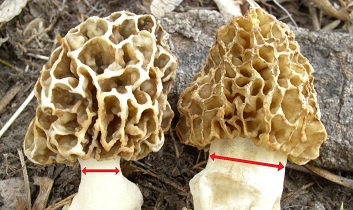
Divergent phenotypes found 2 meters apart. On left is cyliner shaped, narrow based, thick tissued gray. On right is cone shaped, wide based, thin tissued yellow. These originate from different spore strains. (The wide base speeds drying.)
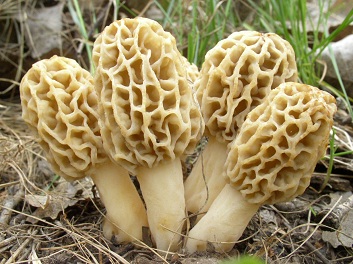
A cluster of identical phenotypes. Such clusters are always the same phenotype and same spore strain.
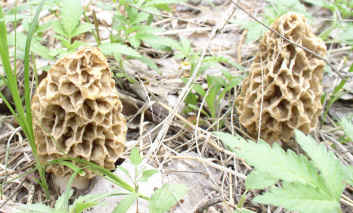
A cluster does not have to emerge from the same point to show the same phenotypes.
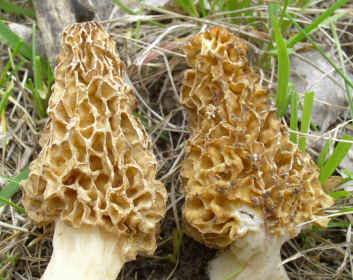
Identical and unusual phenotypes found 1.5 meters apart. The long, pointed cone shape was unprecedented in the area. These two morels would have grown from the same mycelial mass.
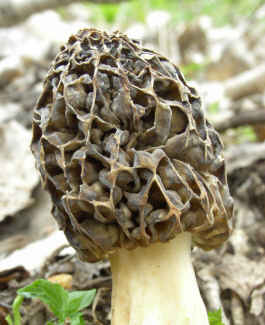
Extremes in pigmentation are found. An unusual group of nearly black morels was found where brown or gray was the usual color. The black color is not an aberation; it includes a continuous gradation from black to white in various morels.
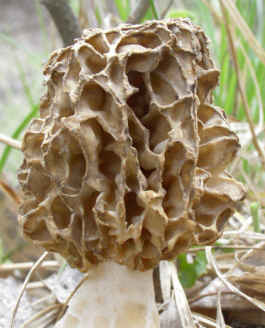
Here, black and brown pigments are combined to create a dark color. Notice that this one has open pits, while the one above it has closed pits.
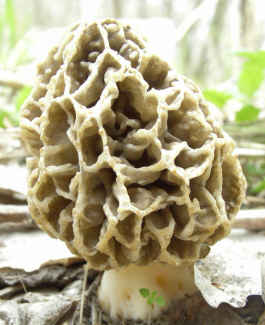
In this case, a moderate amount of gray appeared without the usual yellow or brown.
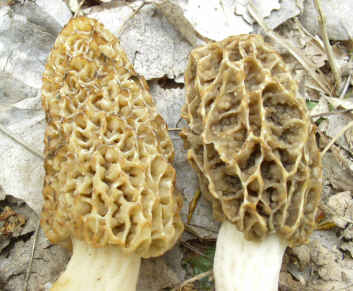
These morels show a contrast between yellow, closed-cell texture and a dark gray, open-cell texture. They were found several meters apart.
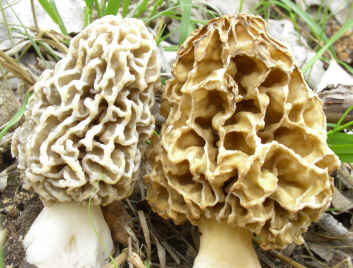
Here, a light gray morel without yellow is close-celled, while a yellow morel is open-celled.
As these variations show, the mycelial mass determines the appearance or phenotype of morels. Researchers and others have suggested that the differences in appearance of morels must be due to environmental influences. Environments do not change the shape of other mushrooms. These photos show very dramatically that the intrinsic characteristics of the mycelium control the appearance. The very unusual long, pointed cone shaped morels would have no statistical probability of appearing near each other if their shape were not controlled by the same mycelium. It is often suggested that there are different species among such variations in morels. For example, the thin tissued cone shaped ones are often labeled as M. crasipies. Biology does not work that way. Different species cannot occupy the same niche. Also, gene exchange between the organisms would homogenize them into one species. Therefore, the differences must be phenotypic and not genotypic. This is also demonstrated by the wide range of variations and the gradations between them. There are certainly genotypic differences between some morels. Some blacks and yellows maintain distinct difference even when not far apart. This is because they have different niches. The blacks grow under leaves, while yellows prefer open spaces. When the different types include different niches, then they should be called different species. These morels are all from the same patch. The diversity within this patch is shown by the morels below.
More Cluster Photos
|
